|
|
|
|
 |
Harold Gilman
|
|
British
1878-1919
Harold Gilman Gallery
Developing an interest in art during a childhood convalescence period, he began his artistic training after a non-collegiate year at Oxford University (again cut short by ill health) and time working as a tutor to an English family living in Odessa. Studying at the Hastings School of Art (1896) and then the Slade School of Fine Art (1897?C1901), he then spent over a year studying the Spanish masters (Velazquez as well as Whistler were major early influences) and meeting and marrying the American painter Grace Cornelia Canedy. Moving back to London, where they settled (apart from an abortive trip to visit her family in Chicago, in which Gilman ducked pressure to join the Canedy family business), they had two daughters (one in London, one in Chicago).
Meeting Walter Sickert in 1907, Gilman became a founder member of both the Fitzroy Street Group (in 1907) and the Camden Town Group (in 1911). In the meantime he joined the Allied Artists' Association, moved to Letchworth, and began to show influence from work of Vuillard as well as Sickert. He soon outpaced Sickert's understanding of post-Impressionism and moved out from under his shadow, however, using ever stronger colour and identifying with Charles Ginner as a 'Neo-Realist' (exhibiting with Ginner under that label in 1914).
Canal Bridge, Flekkefjord, c. 1913Gilman visited Scandinavia in 1912 and 1913, and may have travelled with the artist William Ratcliffe, who had relations there. Gilman made studies of the environment, and painted Canal Bridge, Flekkefjord, an accurate depiction, whose subject is likely to have been inspired by Vincent van Gogh's depiction of a similar bridge in Provence. Gilman had rejected Van Gogh's work when he first encountered it, but later became a strong admirer and, according to Wyndham Lewis, keeping postcards of Van Gogh's work on his wall and sometimes hanging one of his own works next to them, if he was especially satisfied with it.
At that time he also joined Robert Bevan's short-lived Cumberland Market Group with Ginner and John Nash. Remarrying in 1917, in 1918 he was commissioned to travel to Nova Scotia by the Canadian War Records. |
|
 |
Harold Gilman
|
|
(11 February 1876 - 12 February 1919) was a painter of interiors, portraits and landscapes, and a founder-member of the Camden Town Group.
Though born in Rode, Somerset, Gilman spent his early years at Snargate Rectory, in the Romney Marshes in Kent, where his father was the Rector. He was educated in Kent at Abingdon, Rochester and Tonbridge schools, and for one year at Brasenose College in Oxford University.
Although he developed an interest in art during a childhood convalescence period, Gilman did not begin his artistic training until after his non-collegiate year at Oxford University (cut short by ill health) and after working in the Ukraine as a tutor to a British family in Odessa (1895). In 1896 he entered the Hastings School of Art to study painting, but in 1897 transferred to the Slade School of Fine Art in London, where he remained from 1897 to 1901, and where he met Spencer Gore. In 1904 he went to Spain and spent over a year studying Spanish masters (Velezquez and Goya as well as Whistler were major early influences).
At this time he met and married the American painter Grace Cornelia Canedy. The couple settled in London (apart from a visit to her family in Chicago, when Gilman ducked pressure to join the Canedy family business). They had two daughters (one in London, one in Chicago).
|
|
|
|
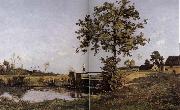 |
Harpignies Henri Joseph
|
|
French Painter , 1819-1916
was a French landscape painter of the Barbizon school. He was born at Valenciennes. His parents intended for him to pursue a business career, but his determination to become an artist was so strong that it conquered all obstacles, and he was allowed at the age of twenty-seven to enter Achard's atelier in Paris. From this painter he acquired a groundwork of sound constructive draughtsmanship, which is so marked a feature of his landscape painting. After two years under this exacting teacher he went to Italy, whence he returned in 1850. During the next few years he devoted himself to the painting of children in landscape setting, and fell in with Corot and the other Barbizon masters, whose principles and methods are to a certain extent reflected in his own personal art. To Corot he was united by a bond of warm friendship, and the two artists went together to Italy in 1860. |
|
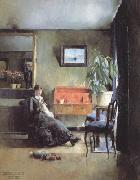 |
Harriet Backer
|
|
Norwegian Painter, 1845-1932
Norwegian painter. In the 1860s and early 1870s she took lessons in drawing and painting in Christiania (now Oslo) and also travelled extensively in Europe with her sister Agathe, a composer and pianist. She copied works in major museums and took occasional art lessons; she later considered this experience to have been of fundamental importance to her artistic development. Little Red Riding Hood (1872; Oslo, N.G.) is impressive in technique, and the early portrait of her sister, Agathe Backer-Grendahl (1874; Holmestrand, Komm.), shows a refined colour scheme. At the age of nearly 30 Backer decided to train professionally as a painter and in 1874 went to Munich. She was never attached to a particular institution, but the influence of her friend the artist Eilif Peterssen was crucial to her development. In Munich she made a thorough study of perspective, which formed a secure basis for her later work. |
|
|
|
|
|
|
|
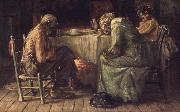 |
Harry Roseland
|
|
(c.1867-1950) was one of the most notable painters of the genre painting school around the turn of the 20th century. An American, Roseland was primarily known for paintings centered on poor African-Americans.
Roseland was largely self-taught, and never traveled to Europe to study art, as did many of the American artists of his time. However, he did receive instruction from John Bernard Whittaker and later, James Carroll Beckwith. One of his most popular subjects were his paintings of black women fortune tellers who read the palms and tea leaves of white women clients. These paintings were widely reproduced during the early 20th century in the form of postcard sets and large full-colour prints that were distributed as Sunday supplements in newspapers. While known most for his paintings of African Americans, his work encompassed many genres, including seascapes and portraits. He also gained renown for his paintings of laborers in the coastal areas of New England and New York and his many interior paintings.
Roseland was born and lived his entire life in Brooklyn. |
|
|
|
|
|
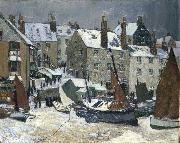 |
Hayley Lever
|
|
(28 September 1876 - 6 December 1958) was an Australian-American painter, etcher, lecturer and art teacher.
Richard Hayley Lever was born in Australia on 28 September 1876. Lever demonstrated artistic talent early on, and spent his entire life focusing on this as his craft. |
|
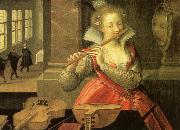 |
hector berlioz
|
|
Period: Romantic (1820-1869)
Country: France
Born: December 11, 1803 in La Cocirc;te-St.-Andre, Isere, France
Died: March 08, 1869 in Paris, France
|
|
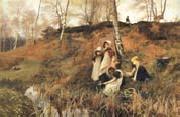 |
Hector Caffieri
|
|
British,the New Water Colour Society which later became the Royal.1847-1832
|
|
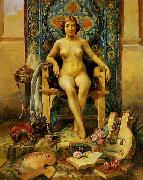 |
Hector Hanoteau
|
|
(25 May 1823 - 7 April 1890, 66) or Hector Charles Auguste Octave Constance Hanoteau was a French landscape painter, born at Decize in Nievre. At the École des Beaux-Arts, he was a pupil of Gignoux, and devoted himself chiefly to landscapes, characterized by sturdy realism and skillful color. He famous works are "The Village Pond," "The Frogs," and "The Water Lilies," all of which are in the Musee du Luxembourg. He is represented also in several French provisional museums. He received a first-class medal at the Paris Exposition of 1889 and the cross of the Legion of Honor in 1870.
|
|
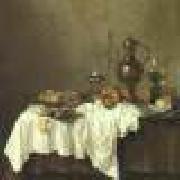 |
HEDA, Willem Claesz.
|
|
Dutch painter (b. 1594, Haarlem, d. 1680, Haarlem).
Dutch still-life painter. His excellent studies of tables laden with food, called ontbijt still life, are seen in many important European galleries. They are characterized by delicate lighting effects and somber colors. |
|
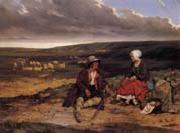 |
Hedouin Pierre
|
|
A fine French painter, etcher and lithographic artist , Boulogne 1820-Paris 1889
|
|
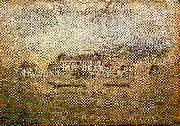 |
hedvig eleonoras
|
|
Hedvig Eleonora av Holstein-Gottorp, född 23 oktober 1636, död 24 november 1715, var svensk drottning och riksföreståndare, dotter till Fredrik III av Holstein-Gottorp och Marie Elisabeth av Sachsen och gift i november 1654 med Karl X Gustav. Hon var med honom i Polen 1656 och i Danmark 1658. Hon var Sveriges drottning i sex år, men de facto "första dam" till sin död 1715, i femtiofem års tid.
Hon blev änka 1660 och levde som änkedrottning i ytterligare 55 år. Kung Karl II av England friade till henne något år efter makens död, men hon tackade nej, med den formella motiveringen att hon önskade vara sin döde make evigt trogen.
Hon satt i förmyndarregeringarna för både sin son Karl XI och sin sonson Karl XII, 1660-1672 samt 1697, och sedan i rådet 1700-1713, men hade i verkligheten aldrig så mycket att göra med politik, utan var nöjd med att formellt presidera över regeringen och hovet som monarkins symboliska överhuvud och representant. Hon stödde dock den profranska och antidanska policy som fördes av regenterna. Hennes son var djupt beroende av henne i hela sitt liv; då han blev gammal nog att sitta med vid regeringens sammanträden, talade han inte direkt till ledamöterna, han viskade i stället vad han ville veta till riksänkedrottningen, och Hedvig Eleonora frågade sedan regeringen med hög röst vad han ville veta.
Då sorgeperioden formellt bröts år 1663 var hon värdinna för omfattande festligheter, och det var i hennes namn Sveriges första fasta teater öppnades i Stora Bollhuset och Lejonkulan 1667.
Hedvig Eleonora, "Riksänkedrottningen", hade en dominant och temperamentsfull personlighet och dominerade det svenska hovet totalt fram till sin död. Även efter sin sons giftermål 1680 och fram till sin död 1715 var hon den verkliga drottningen och behöll sin position som "första dam"; sonen kallade henne "drottningen" och sin fru för "min fru". Under stora nordiska kriget var hon 1700-13 representant för kungen, men intresserade sig inte heller nu mycket för politik- vid audienser för utländska sändebud kunde antingen "moltiga" eller gapskratta åt dem. Hon intresserade sig för kortspel och arkitektur. Hon kunde spela kort till inpå småtimmarna. Drottningholms slott samt Strömsholms slott påbörjades av henne. Vid båda slotten lät hon anlägga stora parker i tidens stil. |
|
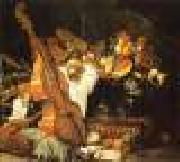 |
HEEM, Cornelis de
|
|
Dutch painter (b. 1631, Leiden, d. 1695, Antwerpen).
Son of Jan Davidsz. de Heem. He spent a great deal of his life in Antwerp, where he was taught by his father. Cornelis also worked in Utrecht in 1667, in nearby IJsselstein in 1676 and in The Hague from 1676 for more than ten years. His best works approach the quality of his father's, particularly in works executed during the decade starting in 1655. Cornelis's still-lifes can be distinguished by daring colour harmonies, sometimes with a strong blue. His compositions are often simpler: fruit-pieces, floral bouquets, festoons and garlands and sumptuous still-lifes, |
|
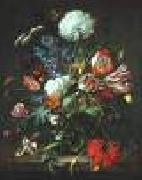 |
HEEM, Jan Davidsz. de
|
|
Dutch painter (b. 1606, Utrecht, d. 1684, Antwerpen).
Dutch painter of fruit and flower pieces. He studied with his father, David de Heem, and became one of Holland's foremost still-life painters. His paintings are found in many leading European museums; the Metropolitan Museum possesses three examples. His son and pupil, Cornelis de Heem, c.1631 C 1695, |
|
|
|
|
|
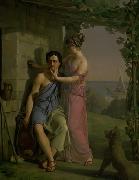 |
Heinrich Eddelien
|
|
Matthias Heinrich Elias Eddelien (22 Januar 1802 in Greifswald - 24 December 1852 in Stuer) was a Danish history painter of German origin. Eddelien arrived in Copenhagen as a young man and attended the Royal Danish Academy of Fine Arts from 1821 studying under Christoffer Wilhelm Eckersberg. In 1837, he was awarded the Academy's large gold medal. From 1839 to 1843, he travelled to Italy and Germany to widen his studies. He painted portraits, altarpieces and decorative works, including the Pompeian Apartment in Christian VIII's Palace at Amalienborg Palace. His principal work is the decoration of Christian IV's Chapel in Roskilde Cathedral but this led to the laming of his right arm. He died when receiving spa treatment at Stuer. |
|
|
|
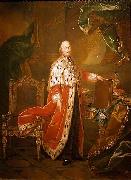 |
Heinrich Foelix
|
|
painted Kurfurst Clemens Wenzeslaus von Sachsen in ca. 1776 |
|
|
|
|
|
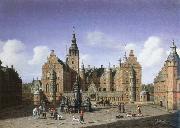 |
heinrich hansen
|
|
Heinrich Hansen (13 October 1861 ?C 17 April 1940) was a German Lutheran theologian and the father of the Lutheran High Church movement in Germany.
Hansen was born in Klockries near Lindholm (Nordfriesland) as a son of a teacher. In Kiel and Erlangen he studied theology, Hebrew, Syriac, Arabic and in particular the Old Testament under August Klostermann. He worked since 1887 as a pastor in Schleswig-Holstein: in Reinfeld, Lindholm, on the island Pellworm, in Kropp and in Olderup near Husum.
Hansen wrote Latin hymns and worked on a Low German Bible translation and published a Low German hymnal. By the study of the old Lutheran theologians, particularly Martin Chemnitz, and the Roman Catholic theologian Johann Adam Möhler, he came to an Evangelical Catholic view about church. In the Reformation jubilee year of 1917??exactly 100 years after Claus Harms?? Hansen published 95 theses (Stimuli et Clavi) in Latin and German, as a sharp criticism against contemporary Protestantism. His theses influenced the foundation of "Hochkirchliche Vereinigung" in October 1918. Hansen is well-known as a co-founder and the first chairman of Hochkirchliche Vereinigung. He died in Breklum
|
|
|
|
|
|
|
|
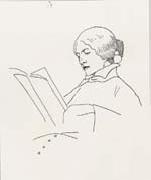 |
Heinrich Vogeler
|
|
1872-1942,German painter, printmaker and architect. He studied from 1890 to 1893 in D?sseldorf. In 1895 he bought the Barkenhoff in Worpswede, near Bremen. Soon afterwards, with colleagues from the WORPSWEDE COLONY, including Fritz Mackensen, Fritz Overbeck (1869-1909), Hans am Ende (1864-1918) and Otto Modersohn (1865-1943), he exhibited successfully at the Glaspalast in Munich. He provided illustrations for the periodical Die Insel, and undertook the interior decoration of the G?ldenkammer in Bremen. In 1906 he visited Ceylon (now Sri Lanka) for convalescence and in 1909 he went to England to study the principles of the garden city movement. He served in the German army in World War I, his writing of a pacifist letter to the Emperor in January 1918 prompting an official inquiry into his state of mental health. In 1919 he founded the Arbeitsgemeinschaft Barkenhoff in Worpswede, in an unsuccessful attempt to create an Arbeitsschule and a utopian community. |
|
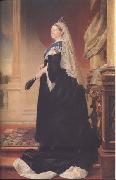 |
Heinrich von Angeli
|
|
1840 - 1925
Austrian painter. In 1853 he moved to Vienna to live with his uncle, who was a collector and a friend of the painters Friedrich von Amerling and Mathias Ranftl (1805-54). Angeli's early Self-portrait reflects the precocious maturity of his style, and in 1854 he enrolled at the Akademie der Bildenden K?nste in Vienna. In 1856, on the advice of Amerling, he went to study under Emanuel Gottlieb Leutze in D?sseldorf, where he executed one of his most significant history paintings, Mary Stuart Reading her Death Warrant (1857). In 1859 he moved to Munich, where he worked independently and was encouraged by Karl Theodor von Piloty, producing the history paintings Ludwig XI and Franz de Paula (1859) and Antony and Cleopatra for Ludwig I of Bavaria. In 1862 he again settled in Vienna, where he enjoyed increasing success. The life-size portrait of Baronin Seidler and the genre painting Avengers of Honour (1869), both exhibited at the Weltausstellung in Vienna in 1873, secured his reputation. After brief stays in Paris and Berlin (c. 1866), he went in 1871 to Italy, where he painted numerous portraits and the genre work Absolution Denied. His final genre paintings, Youthful Love (sold London, Sotheby's, 3 Oct 1980) and Calabrian Shepherd Couple, also date from this year. Henceforth he devoted himself entirely to portrait painting, receiving important commissions from such aristocratic circles as the Kinsky and Auersperg families (e.g. Graf Anton Alexander Auersperg, 1876; Vienna, Pr?sidium des Nationalrates). Whereas his early portraits were influenced by Amerling, Anton Einsle and 17th-century Dutch art, from the 1870s he developed his own elegant and restrained style. This helped him to obtain commissions at the courts of Vienna, St Petersburg and London |
|
|
|
|
|
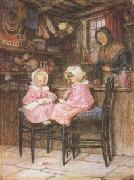 |
Helel Allingham,RWS
|
|
1848-1926
was a well-known watercolour painter and illustrator of the Victorian era. Helen Mary Elizabeth Paterson was born in Swadlincote in Derbyshire,[1] England. Her sister and her father, a doctor, died of diphtheria in 1862, and the rest of the family went to live in Birmingham. In 1867 she went to study art at the "Female School of Art", a section of what became the Royal College of Art in London, and became an illustrator of children's books. She was a great friend of Kate Greenaway. On 22 August 1874, she married William Allingham, who was almost twice her age. At the time, she was employed in illustrating some of the novels of Thomas Hardy, and they were attracted to one another when they met. Helen Allingham illustrated several books, including Six to sixteen: a story for girls (1876), Happy England (1903) and The homes of Tennyson (1905), written with her brother Arthur Paterson. After her marriage to Allingham, she became a watercolour painter, and she was the first woman to become a full member of the Royal Watercolour Society. |
|
|
|
Helen Allingham,R,W.S
|
|
1848-1926
Studies of Flowers
Studies of Flowers .was a well-known watercolour painter and illustrator of the Victorian era. Helen Mary Elizabeth Paterson was born in Swadlincote in Derbyshire,[1] England. Her sister and her father, a doctor, died of diphtheria in 1862, and the rest of the family went to live in Birmingham. In 1867 she went to study art at the "Female School of Art", a section of what became the Royal College of Art in London, and became an illustrator of children's books. She was a great friend of Kate Greenaway. On 22 August 1874, she married William Allingham, who was almost twice her age. At the time, she was employed in illustrating some of the novels of Thomas Hardy, and they were attracted to one another when they met. Helen Allingham illustrated several books, including Six to sixteen: a story for girls (1876), Happy England (1903) and The homes of Tennyson (1905), written with her brother Arthur Paterson. After her marriage to Allingham, she became a watercolour painter, and she was the first woman to become a full member of the Royal Watercolour Society. As well as landscapes, she completed several portraits, including one of Thomas Carlyle. |
|
|
|
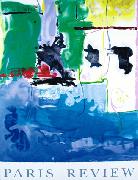 |
Helen Frankenthaler Prints
|
|
Born 1928
Helen Frankenthaler (born December 12, 1928) is an American post-painterly abstraction artist. Born in New York City, she was influenced by Jackson Pollock's paintings and by Clement Greenberg. She was the youngest daughter of a justice on the New York State Supreme Court. She studied at the Dalton School under Rufino Tamayo and also at Bennington College in Vermont. She later married fellow artist Robert Motherwell. |
|
|
|
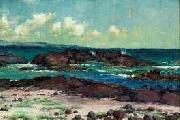 |
Helen Thomas Dranga
|
|
Helen Thomas Dranga (1866-1940), who is also known as Carrie Helen Dranga, was a painter who was born Carrie Helen Tufts in Oxford, England. She lived in Oakland, California from 1894 until 1900, when she moved to Hilo, Hawaii. Her paintings regularly appeared on the cover of Paradise of the Pacific magazine in the 1920s and 1930s. She lived in Hilo until shortly before her death in 1940.
The Honolulu Academy of Arts and the Lyman House Memorial Museum (Hilo, Hawaii) are among the public collections holding works by Helen Thomas Dranga
|
|
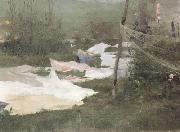 |
Helene Schjerfbeck
|
|
Finnish Painter, 1862-1946
.Finnish painter. In 1873 she began to study at the Finnish Art Society drawing school in Helsinki. On the death of her father in 1876, she was forced to seek help to finance her studies. In 1877 she went to the private academy of Adolf von Becker (1831-1909) in Helsinki, and her work was first shown in public in 1879. In the autumn of 1880 she went to Paris to study at the Academie Trelat de Vigne under Leon Bonnat and Jean-Leon Gereme and in 1881 moved to the Academie Colarossi, studying under Gustave Courtois ( fl 1852-1908) and Raphael Collin (1850-1916). In Brittany that summer, she painted a large oil, A Boy Feeding his Little Sister |
|
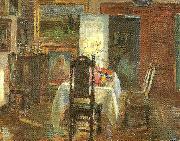 |
helga ancher
|
|
född 19 augusti 1883 i Skagen, död 18 mars 1964 i Skagen, var en dansk konstnär (målare).
Helga Ancher var dotter till konstnärerna Anna och Michael Ancher och förekommer som barn ofta som motiv i föräldrarnas målningar. Helga kom sedermera själv att utbilda sig till målare och studerade bland annat på Konstakademien i Köpenhamn samt i Tyskland, Frankrike och Italien. Även om hon aldrig blev blev lika känd för sin konst som sina föräldrar har en del av hennes tavlor kommit att betinga höga värden på auktioner.
Föräldrarnas hem i Skagen lät Helga Ancher efter moderns död 1935 bevara i det skick det hade då och skänkte sedermera detta till en stiftelse, vilken 1967 kunde öppna konstnärsbostaden som museum. |
|
|
|
|
|
 |
HELST, Bartholomeus van der
|
|
Dutch Baroque Era Painter, 1613-1670
Dutch painter. He was the son of a Haarlem inn-keeper and presumably undertook part or all of his training in Amsterdam. His earliest works suggest that the painter Nicolaes Eliasz. Pickenoy was his master. Although van der Helst had probably already established himself as an independent master by the time he married Anna du Pire in Amsterdam in 1636, his earliest known work, a portrait of The Regents of the Walloon Orphanage, Amsterdam (Amsterdam, Maison Descartes), dates from 1637. Stylistically it is close to the work of Pickenoy. His portrait of a Protestant Minister of 1638 (Rotterdam, Boymans-van Beuningen) reveals the influence of Rembrandt. The young artist must have risen rapidly to fame in Amsterdam, for as early as 1639 he received the prestigious commission for a large painting for the Kloveniersdoelen (Arquebusiers' or Musketeers' Hall): The Civic Guard Company of Capt. Roelof Bicker and Lt Jan Michielsz. Blaeuw (Amsterdam, Rijksmus.), which formed part of the same series as Rembrandt's 'Night Watch' (Amsterdam, Rijksmus.). Van der Helst may not have completed this commission until 1642 or 1643. The ingenious arrangement of the figures in a broad composition shows the artist's special talent for composing large groups. Pickenoy's influence is less noticeable here than in the portrait of 1637; the self-assured poses of the individual figures were to become a characteristic feature of van der Helst's work. The successful execution of this portrait established van der Helst's reputation: from 1642, when he began to receive an increasing number of commissions for individual portraits, until 1670 he was the leading portrait painter of the ruling class in Amsterdam. From 1642 his technique in portrait painting gradually became more fluent and the rendering of costume materials more detailed. Some typical portraits of his earlier period are those of Andries Bicker (Amsterdam, Rijksmus.), his wife Catharina Gansneb Tengnagel (Dresden, Gem?ldegal. Alte Meister) and their son Gerard Bicker (Amsterdam, Rijksmus.), all of 1642, and the Portrait of a Young Girl (1645; London, N.G.). In 1648 van der Helst painted a second civic guard portrait, The Celebration of the Peace of M?nster at the Crossbowmen's Headquarters, Amsterdam (Amsterdam, Rijksmus.), a superbly composed and well painted portrait that, until the late 19th century, was considered one of the masterpieces of the Golden Age but later lost popularity because of its smooth and modish execution. It can nevertheless still be regarded as one of the most important group portraits of the 17th century. |
|
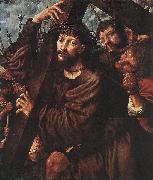 |
HEMESSEN, Jan Sanders van
|
|
Netherlandish Mannerist Painter, ca.1500-1566
was a Flemish Northern Renaissance painter. He was born in Hemiksem, then called Hemessen or Heymissen. Following studies in Italy, in 1524 he settled in Antwerp. A mannerist, his images focused on human failings such as greed and vanity. Like his daughter, Catarina van Hemessen, he also painted portraits. Jan Sanders van Hemessen was a Flemish Northern Renaissance painter. Jan Sanders van Hemessen was from Netherlands. The type of movement he did was mannerism Jan Sanders was born in Hemessen but settled in Antwerp in 1524 after studying in Italy. Hemessen specialized in scenes of human character flaws such as vanity and greed. His pictures are also normally religious and his style helped found the Flemish traditions of genre painting. Hemessen was also a portrait painter, which influenced his daughter to become a Flemish Northern Renaissance painter as well. The Surgeon was painted by Jan Sanders Van Hemessen, in 1555. The oil painting is in a museum called Museo Del Prado, which is in Madrid, Spain. I think the scene painted by Jan Sanders van Hemessen shows a stone cutter at a fair. The surgeon, who is clearly happy that his operations have been successful, painstakingly moves his knife towards the stone, which is already visible. Behind him hang stones which have been successfully cut out of the head of other patients as a sign of his skill. |
|
|
|
 |
Hendrick Avercamp
|
|
1585-1634
Dutch
Hendrick Avercamp Galleries
Hendrick Avercamp (bapt. January 27, 1585, Amsterdam - buried May 15, 1634, Kampen (Overijssel)) was a Dutch painter.
Avercamp studied in Amsterdam with the Danish-born portrait painter Pieter Isaacks (1569-1625), and perhaps also with David Vinckbooms. In 1608 he moved from Amsterdam to Kampen in the province of Overijssel. Avercamp was deaf and was known as "de Stomme van Kampen" (the mute of Kampen).
As one of the first landscape painters of the 17th-century Dutch school, he specialized in painting the Netherlands in winter. Avercamp's paintings are colorful and lively, with carefully crafted images of the people in the landscape.
Avercamp's work enjoyed great popularity and he sold his drawings, many of which were tinted with water-color, as finished pictures to be pasted into the albums of collectors. Queen Elizabeth II has an outstanding collection of his works at Windsor Castle, England. |
|
|

